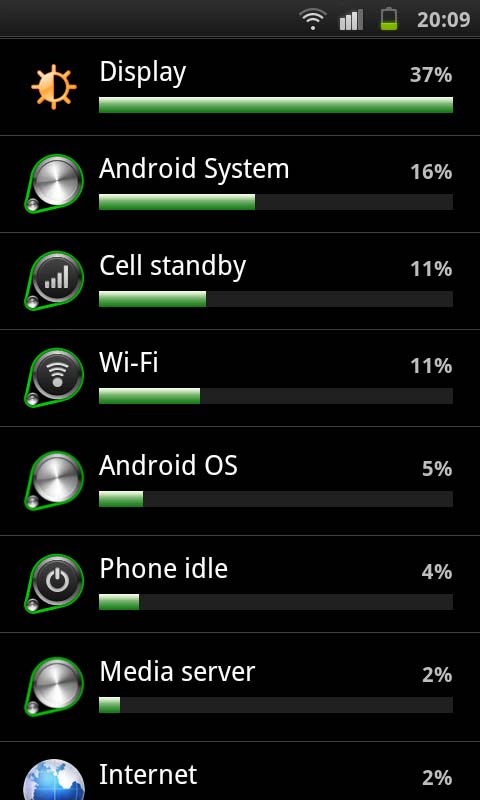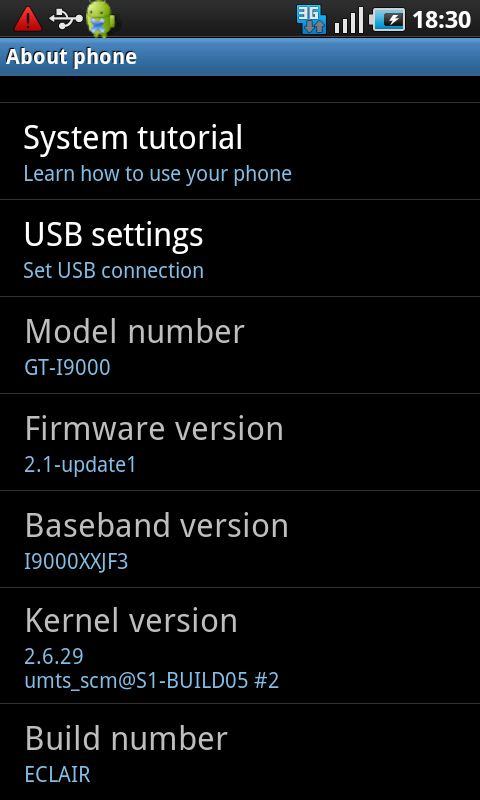Why you can trust TechRadar
Take the back off of the Samsung Galaxy S and you'll find a not too shabby 1500mAh battery inside.
Samsung quotes it as having up to 393mins talk time on 3G and 803mins on 2G.

Manufacturers' estimates always seem wildly optimistic, and it's impossible to gauge their accuracy because we all use smartphones for different reasons and for different lengths of time.
Add to that the fact that batteries tend to take a week or two to bed in with their charging cycles, and the fact that we tend to play with our new gadgets a lot more when we first get them, and you hardly end up with a scientific conclusion.
What we will say is this – we played with a Samsung Galaxy S for a while last year just after release running Froyo, and found the battery to be pretty shocking.

We were talking moderate-to-heavy use after taking the phone off charge at about 8am and having to recharge it by 4pm.
Now, we're not sure if Samsung is in the business of creating miracles, but it certainly seems to have pulled one out of the bag with this update.
Sign up for breaking news, reviews, opinion, top tech deals, and more.
Maybe its Gingerbread's updated power management settings or maybe the Pope blessed our handset, but the Samsung Galaxy S running 2.3 is vastly improved compared to its predecessor.

Curiously, our handset never charged to 100% and seemed to give up at 96%, but that was probably a bug on our unit rather than the Samsung Galaxy S itself.
We took our handset off charge at 6am and went for an hour-long walk with the dog, in which time we shot a couple of videos and photos, sat down with a coffee and browsed the BBC News app for about 15 minutes, then went for a run for two hours using the MiCoach app (which keeps the GPS on the whole time but the screen off) while listening to the FM radio.
We listened to music streamed over the car stereo on a 20 minute drive to a friend's house, surfed the web for a few minutes, sent and received about 15 emails and 11 texts and chatted on the phone for just over half an hour.
By 6pm, we could stand it no longer so checked the battery management settings, convinced the Samsung Galaxy S was about to conk out, and were very pleased when we saw it still had 13% left.
By bedtime, that was down to 10% (admittedly, we didn't use it between 6pm and 10pm) and then when we woke up the next morning, it had died. We really have to congratulate Samsung for this, and point out that the iPhone does not manage to get by so well.
It's all the more remarkable when you look at all of the connectivity options this phone has that could be sapping that battery life at any one moment.

HSDPA/HSUPA, GPS, Bluetooth, Wi-Fi and DLNA are all present and accounted for. You've also got the luxury of tethering from the Samsung Galaxy S to your computer either through USB or creating a portable Wi-Fi hotspot.
We created a wireless hotspot and hooked up to it with our MacBook Pro to write this review, and encountered no problems.
Connecting to a PC requires Samsung's proprietary Kies software, which we're not massive fans of as it sometimes fails to register the pone connection and still east up a lot of computer processing power.

It does a good job for things like converting file formats if you're feeling the urge, and can give you an easy place to download new items too.
But you can bypass this by just using disk mode and dragging and dropping your files into the folder structure. It's by far the easiest way to get media on and off the Samsung Galaxy S - and we'd only recommend checking in with Kies once every couple of months to see if you have firmware updates.
Current page: Samsung Galaxy S: Battery life and connectivity
Prev Page Samsung Galaxy S: Media Next Page Samsung Galaxy S: Maps and apps